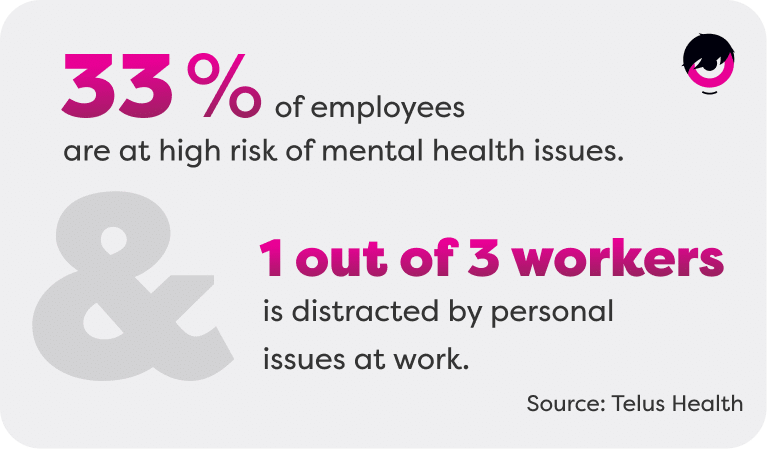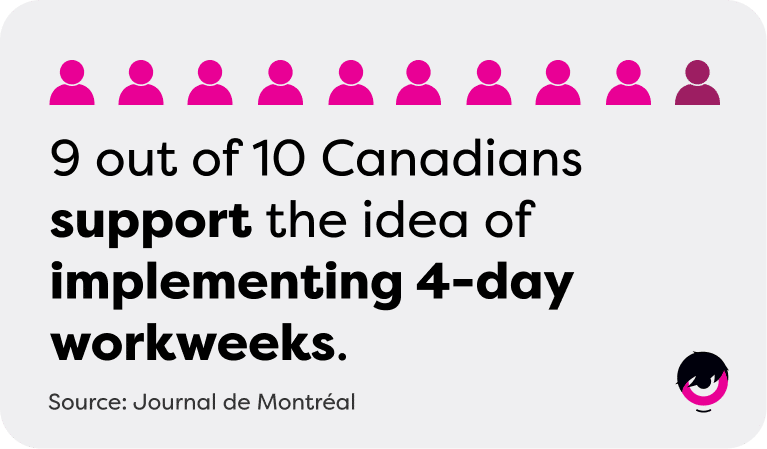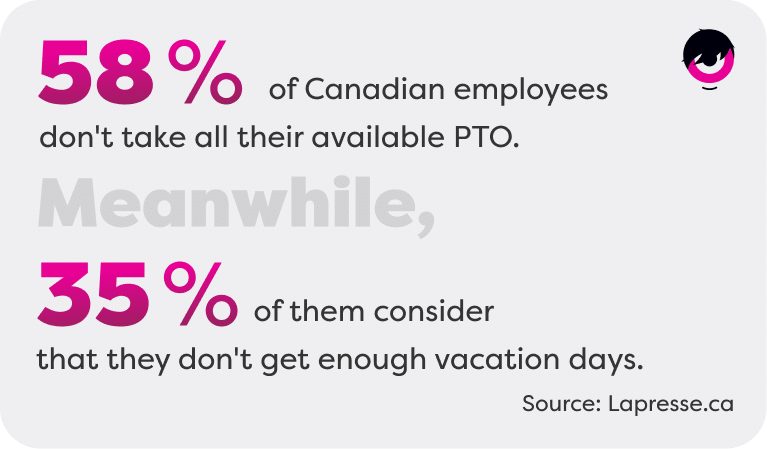Over the past few years, employees’ approaches to work and professional expectations have changed dramatically. Surveys show that 76% of job seekers now prefer non-material and non-monetary benefits. This percentage rises to 86% for newer generations of workers. Unsurprisingly, workplace flexibility often tops the list of job seekers’ expectations.
What does flexibility at work actually entail? What trends should employers and HR professionals be aware of, and what strategies should they adopt to make the most of flexibility while avoiding its downfalls?
You’ll find the answers to all your questions in our article!
What is workplace flexibility?
Flexibility in the workplace means allowing employees to work where and when they want within a predefined framework that considers business goals and organizational context. Flexible work arrangements include, for example, remote and hybrid working opportunities, flexible work schedules, or digital nomad systems.
Workplace Flexibility Trends
Several factors are behind employees’ heightened expectations of flexibility. Here are a few key trends to be aware of:
- On average, we now have children later than previous generations;
- We often become parents and caregivers at the same time;
- We feel a strong need for work-life balance in these contexts;
- Gen Z workers are particularly focused on mental health and work-life balance issues;
- According to a study conducted by Telus Health, 33% of employees are at high risk of mental health problems;
- 42% of employees say they are exhausted after their working day.
- 1 in 3 workers is distracted by issues in their personal lives.
Therefore, generational and mental health issues are at the heart of flexibility expectations.
Without further ado, here are examples of flexible arrangements you can implement in your company and tips for doing so successfully!

Workplace Flexibility Policies to Implement
We can all offer flexibility, regardless of our industry or company size. While remote and hybrid working may not be realistic for all organizations, there are many forms of workplace flexibility to offer your employees:
Wellness and Volunteer Time Off
In addition to regular PTO days, you can offer additional days off to your teams.
Additional vacation days can be dedicated to the each employee’s well-being or individual passions: they can be birthday leave, family leave, personal commitments or bonus leave to enjoy a specific hobby or activity (marathon day, conference on a particular passion, etc.). Some employees also want to devote time to voluntary work, which adds meaning to their working week.
Unpaid or Deferred Leave
We’re all familiar with unpaid leave, which you can promote among your teams when additional rest is needed. You can also take it a step further by implementing deferred leave, whereby a fixed amount is deducted from an employee’s pay and can then be converted into additional days off.
This practice enables employees to take extended leave over several months in order to care for their families, participate in milestone events or enjoy longer trips.
Flexible or Compressed Workweek
Did you know that 60% of workers are dissatisfied with their rigid work schedules and that 42% of Generation Z employees consider such schedules outdated?
Flexible schedules are an effective way of improving employee productivity and motivation levels. For example, you can set up a policy whereby weekly working hours can be completed whenever the employee wants, as long as they are available for their team when needed.
Compressed work schedules are also appreciated by most workers: this involves working more hours on certain days to free up an afternoon or even a day during the week. The 4-day workweek has proved its worth for many companies and continues to gain popularity. The proof is in the pudding: 9 out of 10 Canadians are in favor of implementing a 4-day workweek in their company!

Workation
Workation is a popular practice among many workers who want to benefit from a change of scenery without using their PTO.
As you may have guessed by the name, workation entails working in another country, often a tourist destination, and keeping the same working hours in a more relaxing setting. These trips are often organized among a team, which can also strengthen team cohesion.
If you want to reduce the impact of workation on your day-to-day operations, you can implement a policy limited to destinations within your time zone and offer only one workation opportunity per employee, per year.
Unlimited Vacation
If the idea of offering unlimited vacation time to your teams can be scary, it’s important to be aware of the current holiday-taking context in Canada. Surprisingly, 58% of Canadian employees don’t take all their vacation time, although 70% feel they don’t have enough vacation days available.
Moreover, many workers work overtime before going on vacation so that their absence doesn’t impact their colleagues or their workload when they return. This stance is counterproductive for employees and employers alike since it leads to the risk of illness and burnout on the one hand and lost productivity and sick leave on the other.
In this context, unlimited vacation can be one way of reducing the stress associated with taking time off. Of course, it’s important to set limits to ensure that the system benefits everyone while avoiding potential issues.

Strategies and Challenges You Need to Know When Implementing Flexibility Policies
1. Define your needs and set benchmarks
First and foremost, it’s essential to understand your employees’ needs and how these impact your company’s productivity. For example, if you notice absenteeism problems linked to burnout or mental health issues, it’s probably time to survey your teams about how they feel at work and the policies in place.
Implement realistic action plans according to the context of your company and your workers. There’s no point in offering digital nomad work opportunities if your employees only need less rigid working schedules. For each of your strategies, don’t forget to set clear guidelines to avoid misunderstandings and complications.
2. Involve your employees in the decision-making process
It’s essential to involve your teams in your workplace flexibility strategies: before drawing up your action plans, consider surveying your employees to identify the most pressing needs within your company.
You should also justify your decisions and explain why you have favored one flexibility measure over another in order to avoid feelings of frustration and resistance to change.
Your communication plans must be detailed and transparent, and you should involve your teams at every stage of your plan.
3. Monitor potential feelings of isolation and detachment
While flexibility in the workplace offers many advantages, it can also have its drawbacks when not effectively supervised.
In addition to the risks of isolation affecting some employees, we are currently witnessing a phenomenon of “Great Detachment” among workers, caused among other factors by remote work and the associated loss of communication and cohesion.
To overcome these problems, you need to ensure that you maintain a strong corporate culture that supports performance and motivation. To do so, you can rely on recognition programs, team-building activities, frequent meetings and the promotion of organizational values that correspond to your employees’ expectations. Remember to monitor potential drops in morale and motivation among your remote employees and to share resources on mental health in the workplace.
4. Prevent security issues
Working wherever and whenever you want sounds great – on paper. Nevertheless, remote workers and digital nomads need to be aware of crucial security rules when working remotely and in other parts of the world.
Before introducing flexible measures within your company, you need to build solid cybersecurity policies and communicate them effectively to your employees. It may be a good idea to schedule IT security training sessions in advance to ensure that everyone is on the same page.
Consider establishing disciplinary measures in the event of non-compliance if your awareness-raising efforts are not enough to ensure that essential security rules are respected. Using cybersecurity tools can help you monitor compliance, detect threats, and keep your company’s data safe across all devices and networks.
5. Provide managerial and material support
Workplace flexibility can only be beneficial if it is based on solid foundations. First and foremost, your employees must have the equipment they need to work remotely and connect to their work tools whenever they want. Company accesses, computers and all the equipment required for worker comfort must be provided and updated.
You should also offer exemplary supervision to your flexible employees, from day-to-day guidance and support to effective performance management and development and training opportunities.
The best way to provide streamlined HR management to all your teams, wherever they may be, is to implement flexible HR software solutions that will simplify your daily processes.
6. Track your results and adjust your strategies
As with any HR strategy, the effectiveness of your flexibility policy needs to be evaluated so that improvements and adjustments can be made where necessary.
To measure the success of your flexibility efforts, we recommend not only surveying your teams to obtain their feedback, but also consulting HR KPIs linked to productivity and employee satisfaction. Tracking these metrics will help you keep an eye on workforce motivation and retention rates in real-time.
Track your HR performance indicators and get detailed reports in just a few clicks with Folks HR’s reporting solution!
Workplace flexibility has become a foundation of employee retention and satisfaction. If you want to implement HR marketing strategies that stand out from your competitors, you not only need to put in place an effective flexibility policy but also offer other benefits that will strengthen your total compensation package.
Implement flexible HR processes in your company:
Automate tasks, reminders and reports with powerful HR software solutions!

